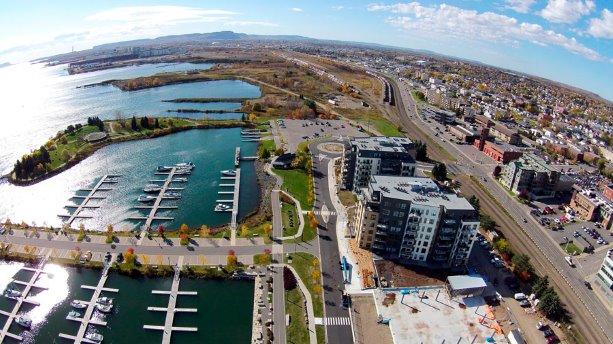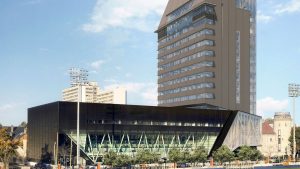This is the first of a two-part series that outlines the role archeology plays in development across the province. The first article explores what lies beneath the waters of Lake Superior and how the artifacts discovered changed the tide for the City of Thunder Bay and its plan for a new marina.
Since at least 2006, the plan had been to establish a marina in the southern portion of Thunder Bay, Ont.’s waterfront.
Then, as preparations ramped up in 2010, an archeological study revealed the area to be chock full of items of archeological interest.
So council halted the project.
As the city’s experience reflects, archeological activities can have a significant impact on development.
Yet when Thunder Bay officials first became aware of the potential of archeological discoveries under the Lake Superior waters, there was no way they could have imagined just how much the findings would shape the marina project.
The Ontario Ministry of Tourism, Culture and Sport, which is responsible for monitoring and enforcing the conservation of archeological resources, had identified the possibility of significant finds as the municipality embarked on development terms of reference for an environmental assessment for the project.
Sure enough, the archeologist hired, Scarlett Janusas of Scarlett Janusas Archaeology Inc. near Tobermory, Ont., found plenty in Tug Boat Basin, the proposed marina location that was next to Pool 6, a 42-acre city-owned site that was also slated for redevelopment.
There were old wharves and, near where a Canadian National Railway Company grain elevator once stood, "we found some incredible crib working," she says. "It was all below the surface and it’s an unusual construction. I’ve never seen it before."
Underneath two grass-covered wharves the archeologists also found one and possibly two derelict ships, and straddling shore and water the remnants of a barge of indeterminate age.
Removing the artifacts was not a realistic option.
"Whenever you do underwater archeology, you don’t really want to move things out of the water because as soon as you do that there’s conservation costs and they can be exorbitant," Janusas explains.
She uses the example of a ship wheel removed in the 1980s from a 19th century British shipwreck in the Arctic. It cost more than $1 million to conserve.
Lou Morrow, the city’s corporate project manager, says the decision to shelve the project reflected worry over costs of mitigation.
There were a lot of unknowns about the archeological finds, he explains.
"The cost (of dealing with them) was unknown, the scope of the work was unknown, mainly because there’s different ways to approach the mitigation of archeological resources," he says.
The finds prompted a search for other sites when, four years later, the city began developing a phase two master plan update for the southern portion of its waterfront. But city officials began to realize that the presence of marine artifacts didn’t have to rule out development.
In 2015, council declared Tug Boat Basin as the preferred option of three proposed locations for the marina.
The preference comes with some caveats.
The proposal now calls for 180 slips rather than the 300 first proposed to avoid the archeological hot spots.
Engineers have also proposed a floating breakwall to reduce costs and protect artifacts.
Morrow describes the lengthy deliberation as a good learning experience.
The message brought home was the importance of ensuring that questions are answered and doing due diligence in the development process as early as you can, he says.
"If you get ahead of yourself and you don’t investigate effectively or efficiently, you’re going to end up wasting a lot of public dollars," he adds. "Because you’re going to start the process and potentially engaging contractors and making promises you can’t fulfill afterwards because there’s a process involved."
Going forward, the city is careful to ensure it’s co-ordinating properly with ministries "and we’re doing what we need to do to protect that culture and heritage," he says.
"Because it’s important to this municipality and it’s important to the project being successful to have the proper approvals to go forward and to do the work that’s necessary."
Sidebar: Archeology playing a larger role in construction projects
THUNDER BAY, ONT. — The volume of construction projects that take archeology into account is growing.
"More municipalities and developers are looking to archeology and heritage to inform the work that they’re doing," says Douglas Yahn, an archeologist based in Thunder Bay. "We’re getting called on more and more for projects."
Indeed, over the past decade, the number of archeological assessment reports submitted to the Ontario Ministry of Tourism, Culture and Sport has doubled to more than 3,000 in 2015 from 1,400 in 2004. By mid-December, the ministry had received 3,230 reports in 2016. The ministry oversees archeological activity in the province.







Recent Comments
comments for this post are closed